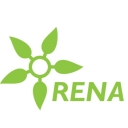Sub-Regional Workshop on Appropriate Assessment (AA) Part I: Theory of AA and the Screening Stage
Date: 16-18.09.2014
Place: Kavadarci, FYROM
Organizer: ECRAN Secretariat with EC TAIEX Unit
The key EU instrument of nature protection across the EU MS is the network of sites dedicated to conservation of birds (SPA) and selected fauna, flora and habitat types (SCIs) established pursuant to the EU Nature Directives – Bird Directive (147/2009/EU) and Habitats Directive (92/43/EEC) – called Natura 2000. Once this network has been established, the Member States are obliged to develop management measures for particular sites, to actively apply them, and prevent the sites from any deterioration or even destruction. For the latter purpose, addressing especially implementation of various development plans and projects (but in principle any activity likely to put them at risk), all EU MS have to put into both legislation and practice so-called Appropriate Assessment (AA) – a procedure aimed at revealing if the activities under scrutiny may be harmless or harmful to Natura 2000 sites.
AA is governed by Art. 6 of the Habitats Directive and almost 40 rulings of the Court of Justice of the EU which are binding for the EU MS, too. Understanding and proper implementation of the AA procedure is rather difficult and belongs to major challenges of the pre-accession process. AA is often envisaged to be carried out within the framework of EIA/SEA. It has many advantages but there are some peculiarities of AA compared to the latter procedures which have always to be respected.
In the ECRAN region, the large proportion of the territory of particular countries is still covered by unspoiled and relatively undisturbed nature; as a consequence, relatively larger proportion of their territories will become part of Natura 2000 network, which may lead to conflicts with various developments. Then, improperly carried out AA may contribute not only to irreversible loss of unique natural assets but also to failure of many (useful) development projects. Therefore, early training on AA may be highly beneficial not only for EU Candidate Countries but also for those that have not acquired that status yet.
The objective of the whole series of sub-regional workshops is to provide ECRAN Beneficiaries with the complete picture of the AA from its very beginning (screening) up to the final decision on the acceptability of the project and to present them also the derogation procedure according to Art. 6(4) of the Habitats Directive applicable to projects needed in public interest overriding the interest on protection of Natura 2000 network. The whole process is divided into three workshops, each of them corresponding to relevant stage of the AA according to the Habitats Directive (screening; main assessment; Art. 6(4) derogation procedure).
Objectives of the Workshop:
The aim of this first workshop is to present:
- What is the objective of Natura 2000 network and how the AA is linked with meeting this objective;
- The place of AA among other Member States´ obligations regarding management of Natura 2000 network;
- What are the differences and similarities between AA and EIA;
- What kind of data is needed for AA and what administrative procedures are recommended to be introduced;
- What is the purpose of the 1st stage of AA – screening, what forms it may have and what data it requires;
- The real pilot site (future Natura 2000 site) and pilot project used for demonstration of the AA;
- The real screening exercise for the pilot site and project;
- Experience of a new EU MS with both AA and screening;
- Outline of the upcoming procedure of the main assessment (= subject of the 2nd workshop).
An intrinsic part of the workshop will be a field excursion showing the situation in the field on the future Natura 2000 site and helping the participants to understand all the circumstances of this pilot AA.
Expected Results of the workshop
The expected results are:
- Improved understanding of the objectives of Natura 2000 network and the role of AA as one of its protective tools in its maintenance;
- Familiarization with particular requirements of AA in light of CJEU rulings;
- Understanding the differences from and similarities with EIA;
- Familiarization with the pilot site and pilot project;
- Learning about the 1st stage of AA (screening) and undertaking the screening for the pilot site;
Sharing experience with a new EU MS relevant for the region with AA implementation

